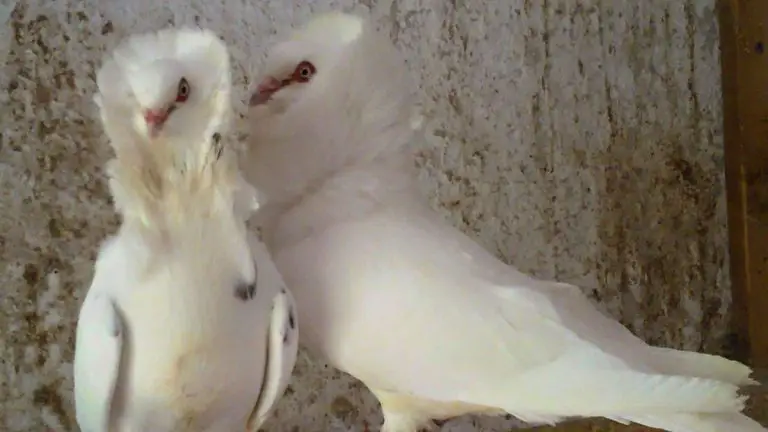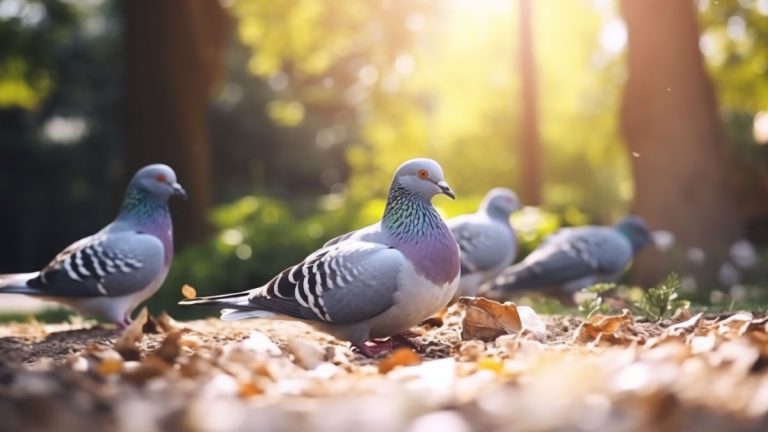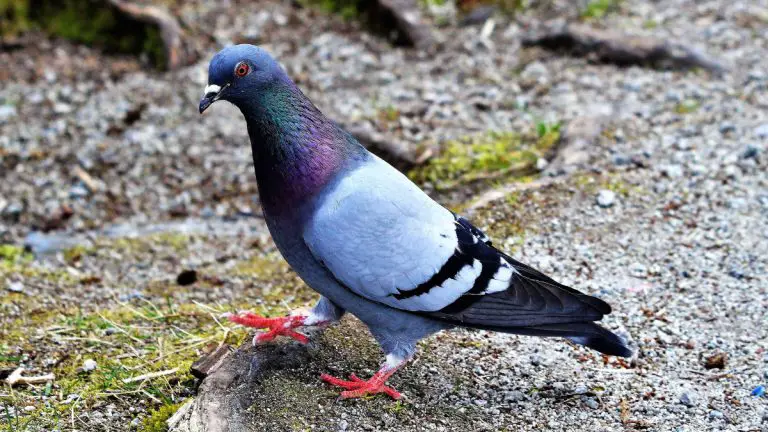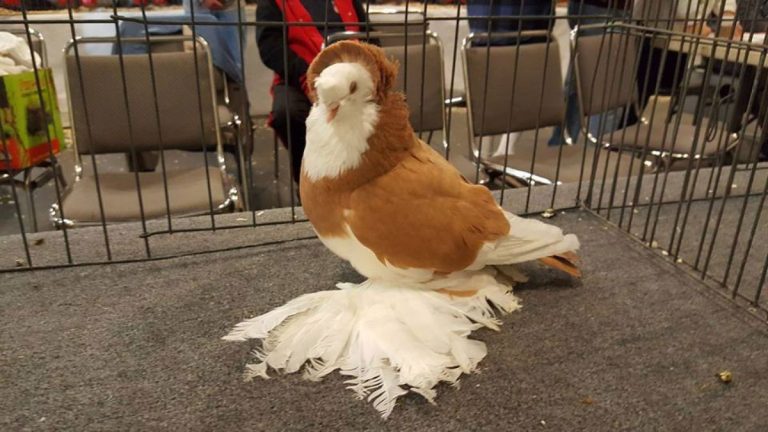Nicobar Pigeon 101: Physical Characteristics, Habitat, Behavior, and Conservation Status
The Nicobar pigeon is one of the most eye-catching species of pigeons found in nature. This beautiful bird is well-known all around the world for its unique features and physical characteristics. These Nicobar pigeons are typically seen in Andaman and Nicobar Islands, and the tropical forests surrounding Southeast Asia.
These pigeons are an essential part of the island ecosystem as they help with plant growth, seed distribution, etc. However, the Nicobar pigeons are a near-threatened species in nature. Understanding the importance of these birds along with their habitat, diet, behavior, etc., is a must to help with the conservation.
In this guide, we will discuss everything there is to know about the Nicobar pigeons. We will take a deeper look at the pigeon’s behavior, characteristics, conservation status, and many more. Continue reading till the end!
Physical Characteristics of Nicobar Pigeon
As we already mentioned, the Nicobar pigeon is one of the most stunning pigeons with distinctive features and characteristics. They are also one of the largest species of pigeons you will find in the world. Let us take a look at the physical characteristics of these pigeons.
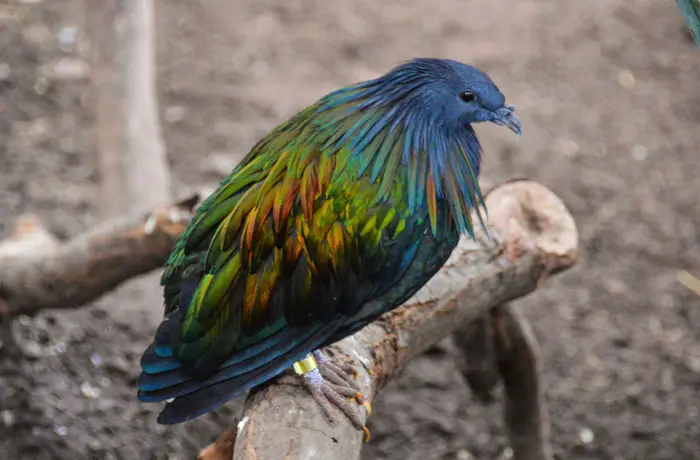
Size and Shape
Nicobar pigeons are known to be one of the largest types of pigeons. These birds have a strong and muscular build with a medium to large size. Typically, the pigeons grow to a length of 40 centimeters and weigh up to 1.5 pounds.
The legs of the pigeons are also strong, which helps them to look for food easily. Not only that, but they also have strong wings, helping them to fly long distances without much trouble.
Plumage
In Nicobar pigeons, the plumage has an eye-catching metallic green color paired with striking bronze. These colors give the pigeon a unique look as they shine under the sunlight. The wings of the birds are also covered in these two colors, giving them a great look when flying.
Head and Face
One of the most eye-pleasing physical features of Nicobar pigeons is their red eyes. With a short and curved beak, these birds have a small head which gives them a unique look. Not only that, but the pigeons usually have a pink or gray patch of skin over their stunning red eyes.
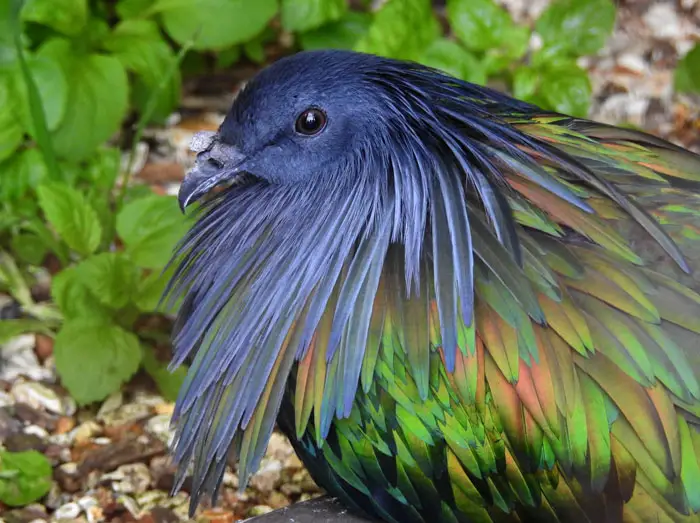
Markings
Nicobar pigeons have distinctive markings on their bodies. These include a white-tipped tail along with beautiful white stripes on the wings. The beaks of the pigeons are yellow paired with a red tip. On top of that, these birds have black collars on their necks.
Different Variations Of Nicobar Pigeon Species

The Nicobar pigeons are typically divided into four subspecies. Each and every species of these pigeons have its own physical characteristics and features. Here are the different variations of Nicobar Pigeon’s physical characteristics.
1. Nicobarica
The nicobarica species is the commonly known type of Nicobar pigeon. These birds are typically found in the Nicobar Islands and are known for their large size. The plumage of this type has a coppery shine, and their red eyes give them a distinctive look.
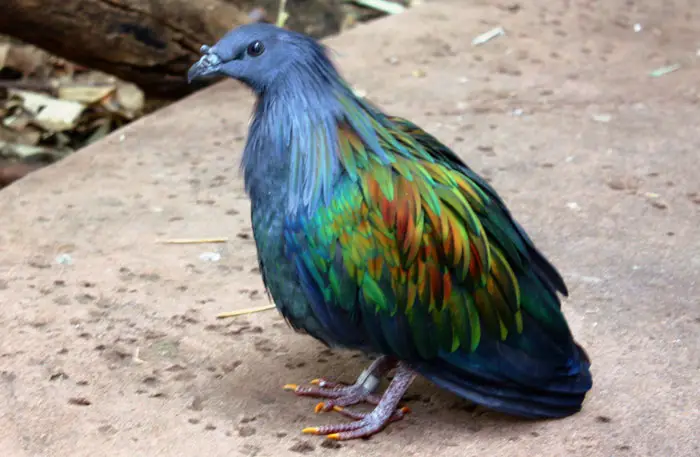
2. Pelewensis
Pelewensis species of the Nicobar pigeons are smaller in size compared to both Bartsch and nicobarica. The male pigeon grows up to a length of 35 centimeters, whereas the females are a bit smaller. It has a darker plumage compared to the other types, making it look more distinct.
Adaptations Of Nicobar Pigeons To Survive In Island Habitats
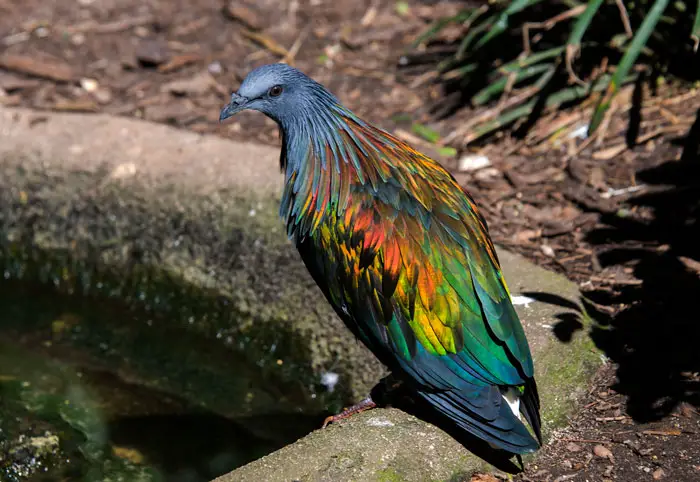
Surviving in island habitats or harsh environments is not easy for any species. The Nicobar pigeons have developed several adaptations in order to survive these conditions. Check out the bird ecology and adaptations of these birds to ensure healthy survival in these habitats.
Foraging:
The Nicobar pigeon diet mainly depends on seeds, grains, fruits, insects, and so on that they find on the islands. These birds typically have strong legs, which helps them to forage on the grounds to search for food.
Strong Wings
Nicobar pigeons are mostly found on islands, and they have to fly long distances in search of food. These birds have strong wings, which help them fly from one island to another to find food, mates, and so on.
Breeding
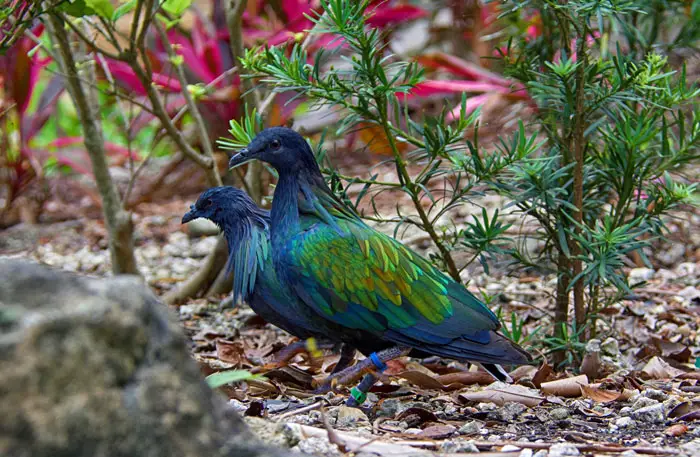
These pigeons usually build their nests on trees or the ground to lay eggs. Typically, the birds lay one egg per clutch, and both the male and female pigeon help with the incubation and care of the egg.
Not only that, but they also have a specific call for social behavior, such as mating and communication.
Drinking Water
The pigeons have a specific salt gland on their body, which helps to remove excess salt. This gland makes sure that the pigeons can survive by drinking the salty seawater from the ocean. The reason behind this is that the birds live in areas where the water is salty.
Habitat and Behavior of Nicobar Pigeons
Nicobar pigeons are typically found in a wide range of habitats near Southeast Asia and the Pacific Ocean. They are mainly native to Andaman and Nicobar Islands in the Indian Ocean.
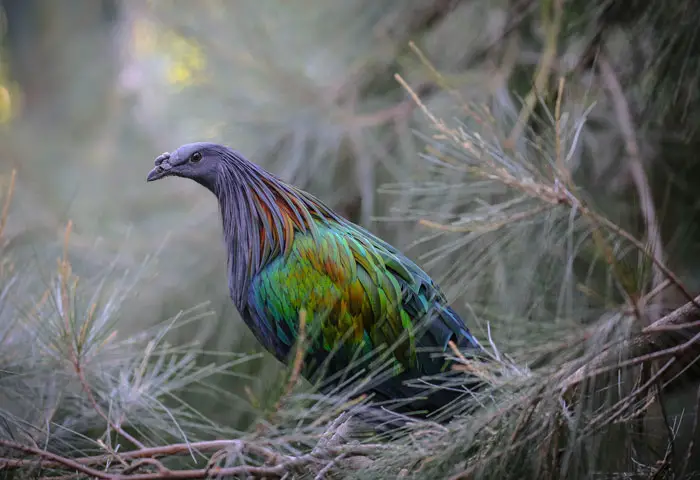
Their habitats include tropical forests, coastal areas, islands, and many more. The Nicobar Pigeon behavior is considered to be social as the birds usually live together in flocks. These Nicobar Pigeon habitats are usually found near water bodies, such as oceans.
Feeding and Nesting Behavior
The pigeons are most active during day time, and their diet mostly consists of seeds, grains, etc. Due to their omnivorous bird behavior, they also feed on small insects, bugs, and so on.
When it comes to nesting behavior, the birds build their nests on trees and ground for shelter and to lay eggs. Typically, the birds lay one egg per clutch, and both parents take turns incubating the egg and feeding the baby.
Role of Nicobar Pigeons in the Island Ecosystem
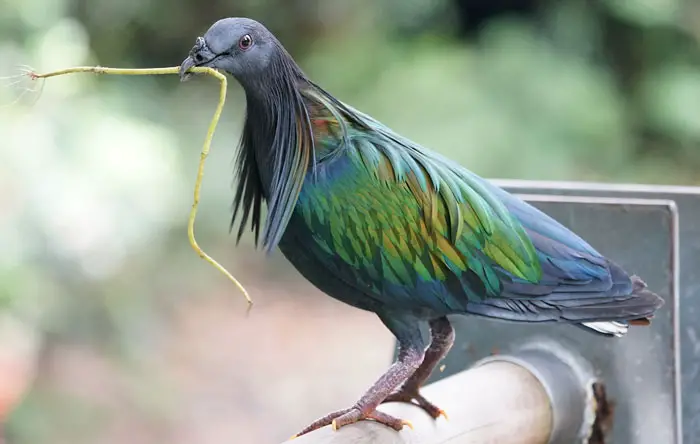
These pigeons are a crucial part of the island ecosystem as they help to disperse seeds and grow plants. On top of that, their behavior is calm as they coexist with several other bird species and do not threaten them in any manner.
Conservation Status of Nicobar Pigeons
As we mentioned earlier, the Nicobar pigeons are a highly important part of the ecosystem. However, the Nicobar Pigeon conservation status is a matter of concern. Currently, the Nicobar pigeons are considered to be a near-threatened species in the world.
There are quite a few reasons behind this situation, such as loss of habitat, hunting, pet trade, egg collection, and so on.
Forests are being cleared for industries, agriculture, and many more. These clearings are reducing the pigeon habitats of the birds as they are losing their food sources and nesting areas.

Hunting is also considered to be a serious threat to the Nicobar pigeon population. The birds are usually hunted for food, pet trade, or egg collection in several countries around the world.
Ensuring proper pigeon conservation methods is a must to make sure that the habitat of these birds is safe. This will help them to grow in numbers and reduce the risk of extinction.
In order to do this, public awareness from bird conservation organizations is a must. For conversation of Nicobar pigeons, it is essential to make sure that their habitat is safe.
Not only that, but several accurate research has been conducted by bird research institutions. The research is on the living conditions and habitat conservation of these birds is equally important to take effective measures.
Interesting Facts About Nicobar Pigeon
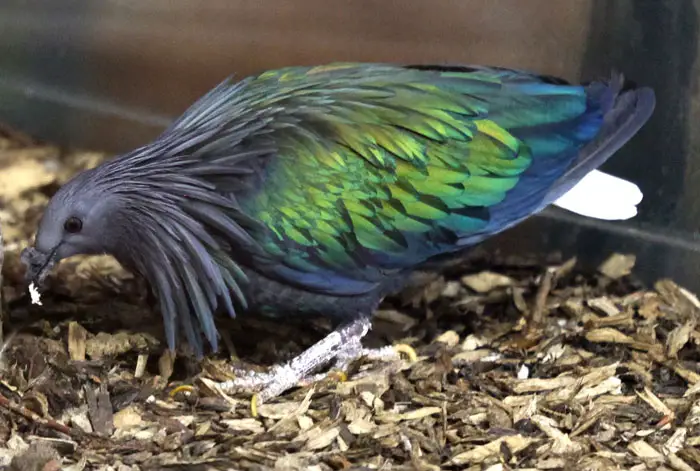
There are quite a few interesting facts about Nicobar pigeons that many people do not know. Read about some of these astounding facts here!
- Nicobar pigeons are known to be a close-living species of the dodo bird which went extinct.
- In a few tribes or cultures, such as the Shompen tribe, these birds are known to have a deep spiritual meaning. Typically, these birds are considered a symbol of good luck, fertility, and so on.
- Nicobar pigeons are a large species of pigeons. They can reach a length of 40 cm and can weigh up to 1.5 pounds.
- In many cultures, including the Karen tribe, the featurng behaves of these pigeons were used in hair accessories for their beauty and spiritual significance.
Conclusion
The Nicobar pigeons are one of the most fascinating and interesting species of birds you will find in nature. These birds are known for their beautiful physical characteristics and their unique behavior.
While these birds are important to the environment, they are an endangered species. Nicobar pigeons are important to the island ecosystem and learning more about their behavior, habitat, etc., will make conservation easier. In order to ensure safety, it is important to take effective measures to conserve the Nicobar pigeon population.



